
Dido Building Carthage, 1815 J.M.W. Turner
Dido Building Carthage J.M.W. Turner Date: 1815 Style: Romanticism Genre: history painting Media: oil, canvas Location: National Gallery, London, UK Dimensions: 155.5 x 232 cm Order Oil Painting reproduction Tags: houses-and-buildings forests-and-trees Sky Atmospheric phenomenon morning Waterway Atmosphere J.M.W. Turner Famous works

Dido Building Carthage 20x24 Framed Art Print by William Turner
JMW Turner's Dido Building Carthage. Photograph: National Gallery, London JMW Turner JMW Turner, the English Claude A new exhibition charts the influence of Claude, the 17th-century landscape.
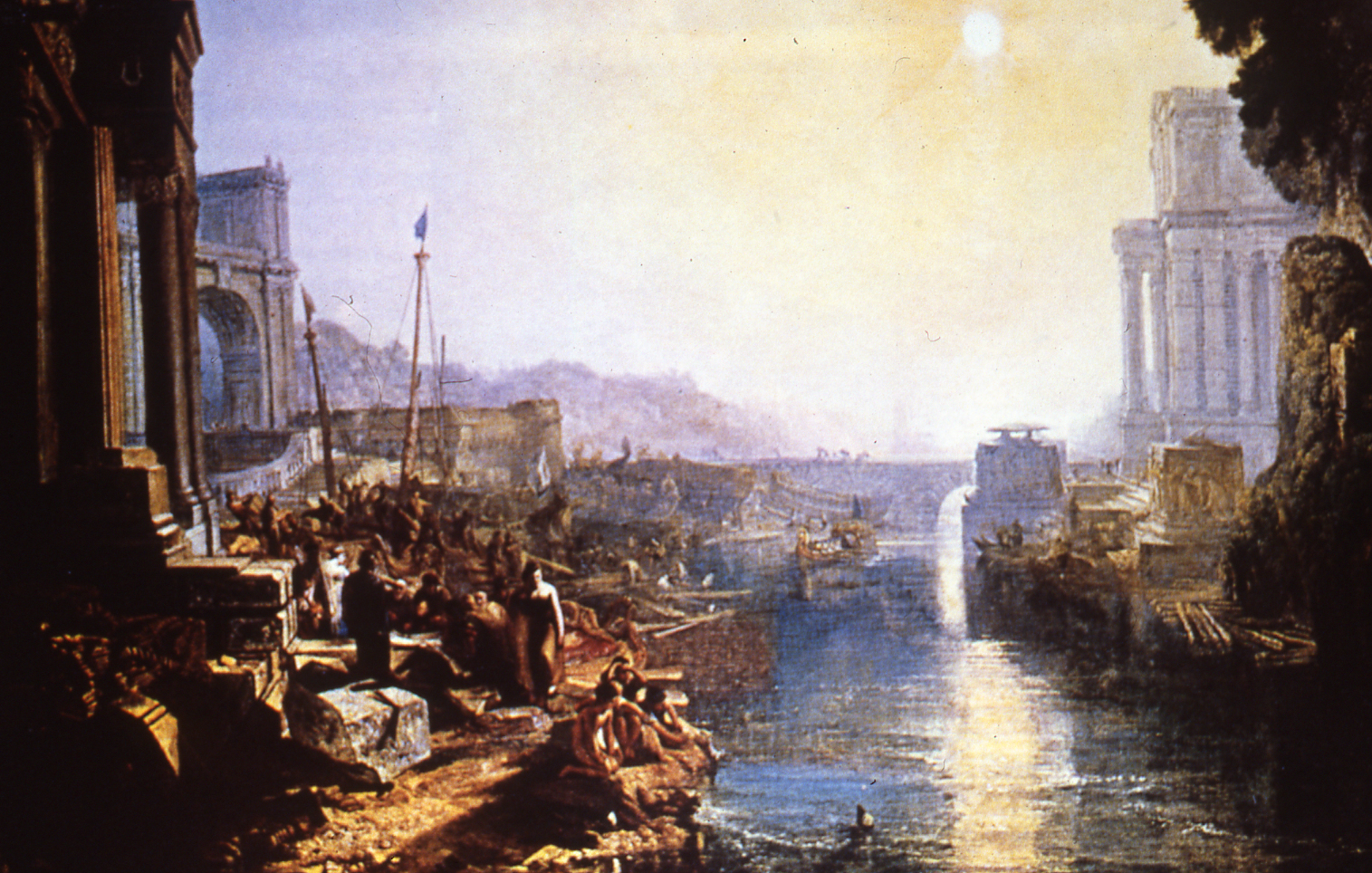
Dido Building Carthage The Rise Of The Carthaginian Empire Painting By
Timothy Cole (American (born England), 1852-1931) After Joseph Mallord William Turner (English, 1775-1851) Printed by J. C. Bauer (American, late 19th-early 20th century)
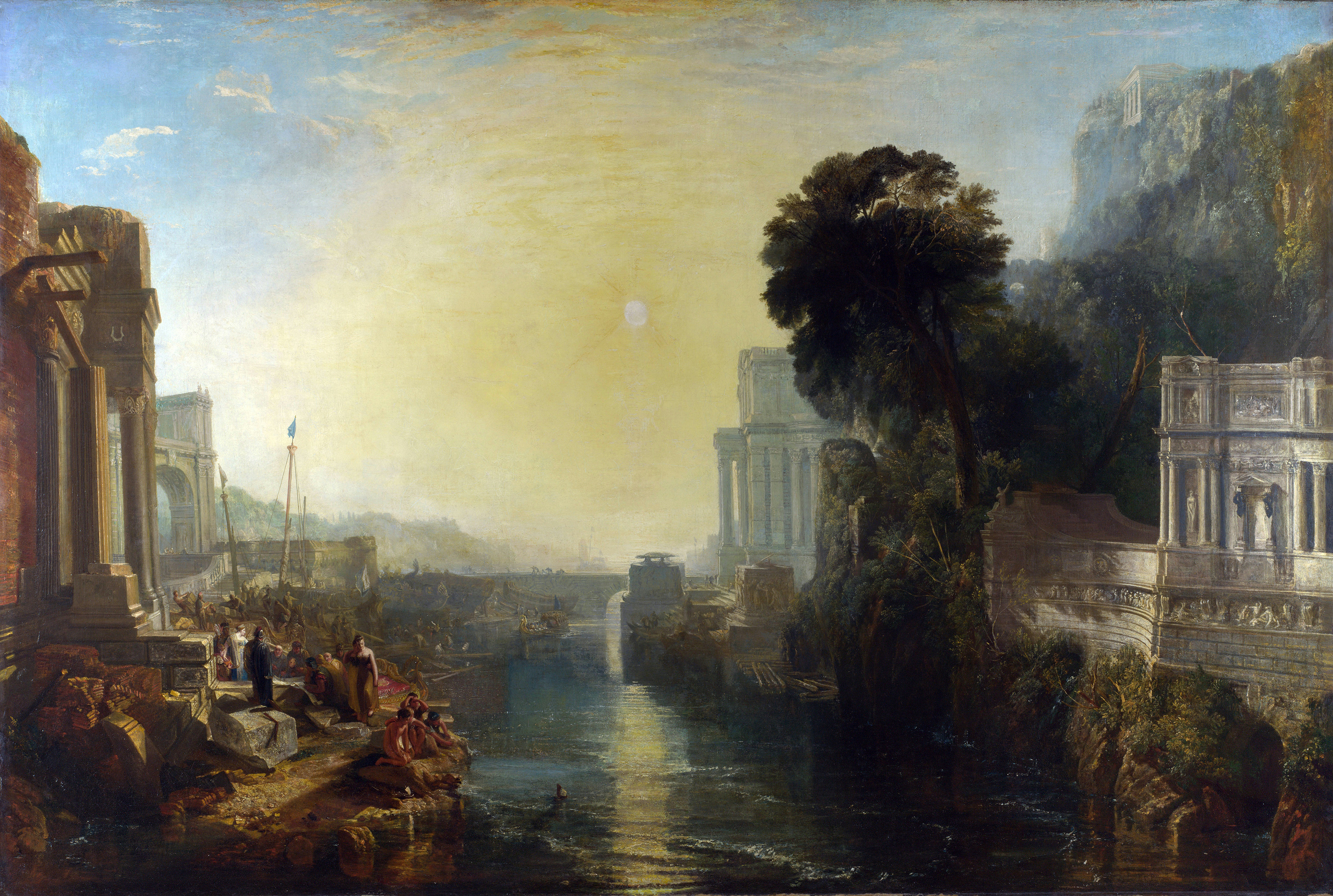
Dido Building Carthage by Joseph Mallord William Turner
The well-organized society that Dido had created prior to Aeneas's arrival is drastically changed once she becomes infatuated with him. The building of Carthage comes to a complete stop. Even worse, the city's defense against enemy invasion — a concern that Anna uses to urge her sister to pursue Aeneas — is not maintained.

"Dido building Carthage by Joseph William Turner" Sticker by Geekimpact
Dido building Carthage is known to some as The Rise of the Carthaginian Empire, and is a classic artwork from JMW Turner, dated 1815. The depiction of architecture will remind some of the later leader of the Hudson River School, Thomas Cole.

Dido Building Carthage 20x24 Framed Art Print by William Turner
J. M. W. Turner, Dido building Carthage, or The Rise of the Carthaginian Empire, 1815 Dido building Carthage, or The Rise of the Carthaginian Empire is an oil on canvas painting by J. M. W. Turner.The painting is one of Turner's most important works, greatly influenced by the luminous classical landscapes of Claude Lorrain.Turner described it as his chef d'oeuvre.
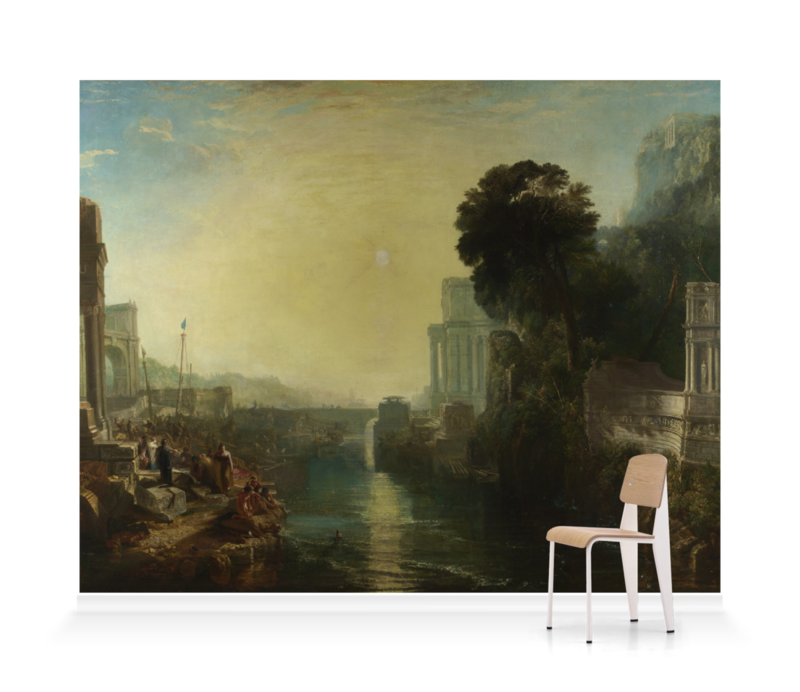
Dido building Carthage' Wallpaper Mural Surface View
JMW Turner's Dido Building Carthage (1815), an emulation of Claude Lorrain's painting, both of which are on display at Tate Britain. Photograph: The National Gallery JMW Turner JMW Turner: a.

Painting of Dido Building Carthage, or The Rise of the Carthaginian
Transcript. Clive Head: At first glance, it would seem that [Joseph Mallord William] Turner is using a very conventional composition for this painting - with this large mass of trees occupying the golden section on the right-hand side of the painting, balanced by simple constructions on the left and to the right. I think we can find that kind of composition throughout the history of.

Dido building Carthage. Found in the collection of the State... News
A scenic river view of Carthage as it is being built, overseen by Dido, its queen. (Image courtesy of WebMuseum [J.M.W. Turner's "Dido building Carthage, or The Rise of the Carthaginian Empire," 1815, oil on canvas; National Gallery, London])
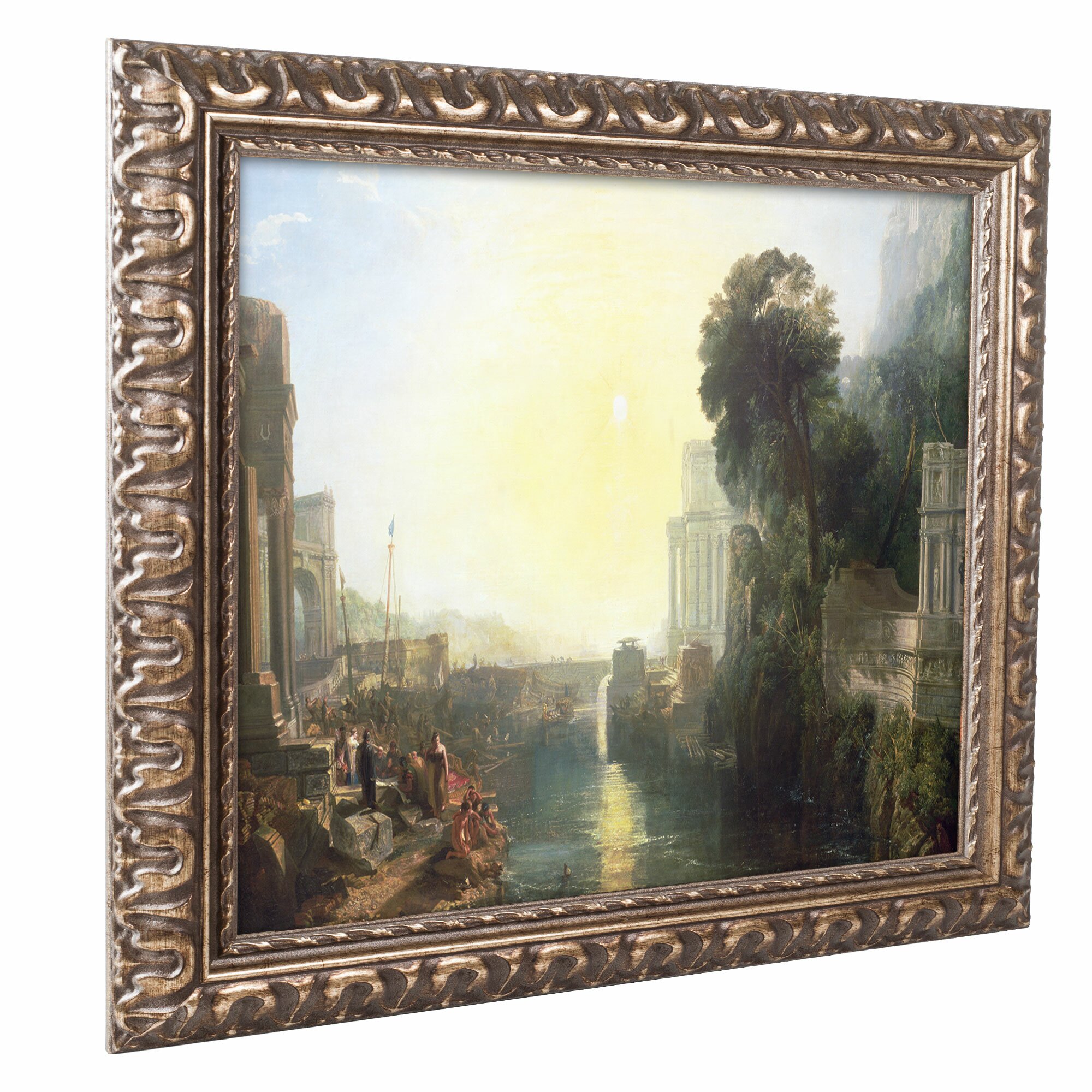
Trademark Art 'Dido Building Carthage' by Joseph Turner Framed Painting
Video essay on Joseph Mallord William Turners' masterpiece "Dido building Carthage". References: 1. Turner, J. and Herrmann, L. (1986). Turner, paintings, wa.
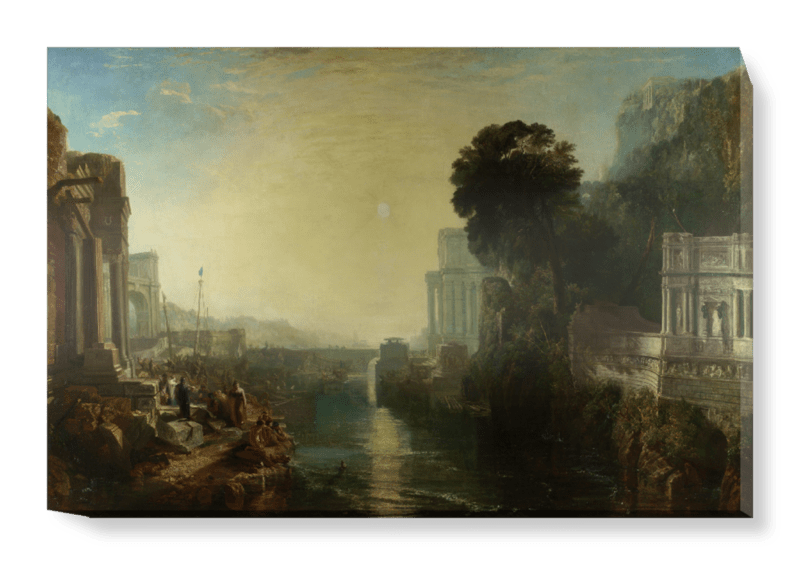
'Dido building Carthage' Canvas Wall Art SurfaceView
Tag this. Turner's painting of the North African city of Carthage, founded by Dido, its first queen, was inspired by Virgil's epic poem, the Aeneid. The figure on the left dressed in blue and wearing a diadem is Dido herself, visiting the tomb that is being built for her dead husband, Sychaeus. The man in a cloak and helmet standing before.
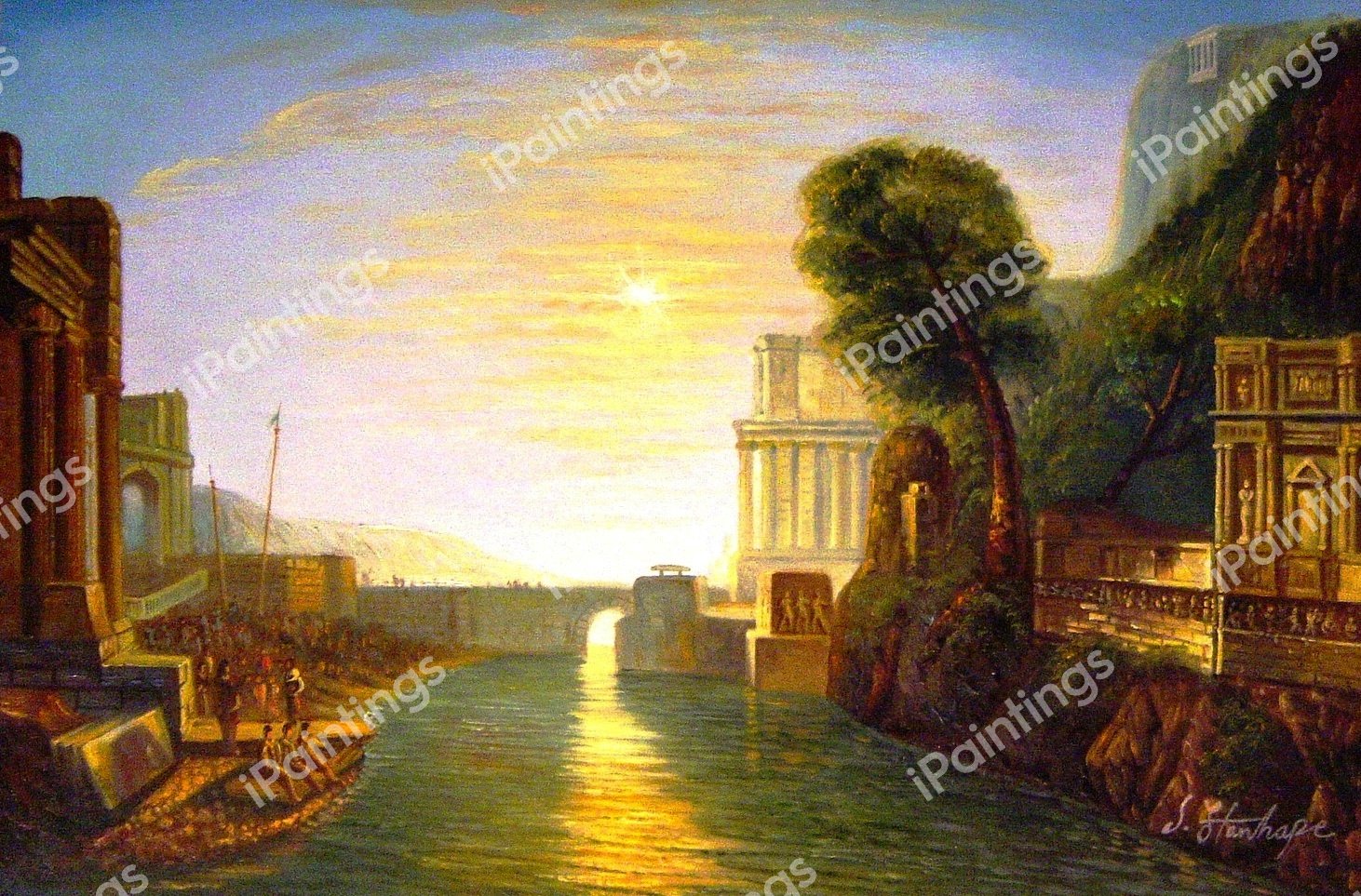
Dido Building Carthage The Rise Of The Carthaginian Empire Painting by
In his will, Turner specified that Dido building Carthage, together with his Sun Rising through Vapour, should be hung in the National Gallery alongside two of Claude's paintings. Turner's painting is based on the English seventeenth-century author and poet John Dryden's translation of the Aeneid , the monumental Latin poem written by the.

Dido building Carthage 1000Museums
Dido Building Carthage is a Romantic Oil on Canvas Painting created by Joseph Mallord William Turner in 1815. It lives at the National Gallery, London in London. The image is in the Public Domain, and tagged Men, Women and Towns & Villages.

Dido Building Carthage. Antique Print Map Room
"Dido Building Carthage" by J. M. W. Turner "Dido Building Carthage" by J. M. W. Turner depicts the classic story from Virgil's Aeneid in which Dido, the figure in blue and white on the left, is directing the builders of the new city of Carthage. The figure in front of her, wearing armor, is her Trojan lover Aeneas.

JMW Turner Dido building Carthage Mural Wallsauce CA
Dido Building Carthage by J.M.W. Turner - Top 8 Facts By: Trace Bradley Published: August 28, 2022 When one of the most prolific and successful English artists described a painting as his Magnum Opus in 1815, he simply couldn't let it go. J.M.W. Turner (1775-1851) was a leading artist of the Romantic era and he left behind over 550 oil paintings.

Dido Building Carthage or the Rise of the Carthaginian Empire by TURNER
Name Dido, a painting by Dosso Dossi. Many names in the legend of Dido are of Punic origin, which suggests that the first Greek authors who mention this story have taken up Phoenician accounts. One suggestion is that Dido is an epithet from the same Semitic root as David, which means "Beloved". [3] Others state Didô means "the wanderer". [4] [5]